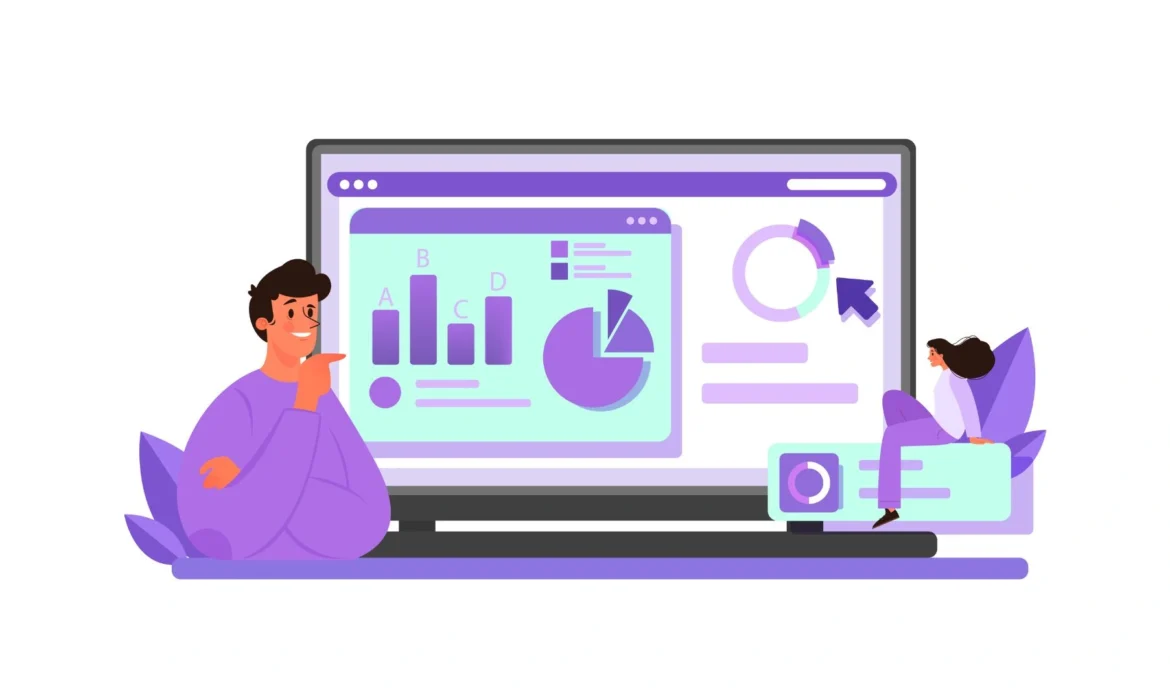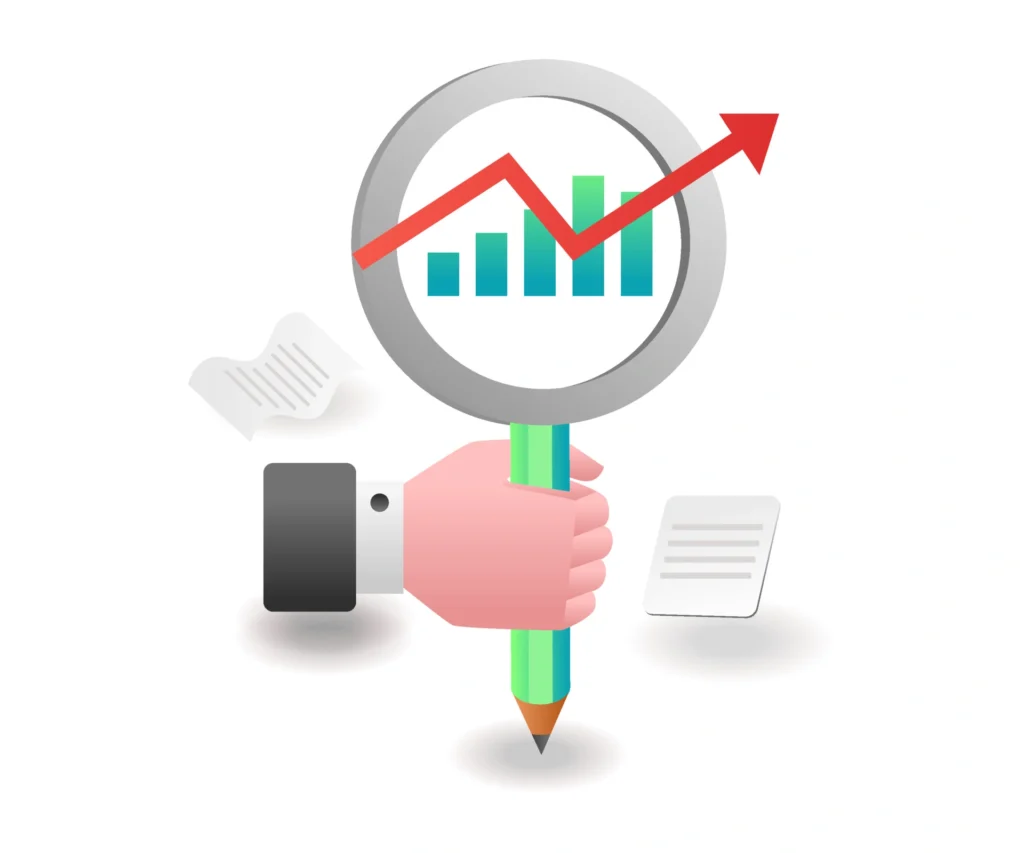How to Conduct a Competitive Analysis and Why It’s Important for Your Business

How to Conduct a Competitive Analysis and Why It’s Important for Your Business
What you’ll learn in this guide:
- Introduction
- Competitive Analysis
- Importance of Competitive Analysis for Businesses
- II. Understanding Competitive Analysis
- Definition and Purpose
- Types of Data Included in a Competitive Analysis
- Tools and Methods for Conducting Competitive Analysis
- III. Steps to Conducting a Competitive Analysis
- Identify Your Competitors
- Direct Competitors
- Indirect Competitors B. Gather Information About Your Competitors
- Products and Services
- Pricing Strategy
- Marketing Tactics
- Strengths and Weaknesses C. Analyze the Gathered Data
- SWOT Analysis
- Competitive Positioning
- Identifying Opportunities and Threats
- IV. Importance of Competitive Analysis for Businesses
- Helps in Identifying Market Trends and Changes
- Enables Businesses to Differentiate Themselves
- Aids in Setting Realistic Goals and Benchmarks
- Facilitates Strategic Decision-Making
- Enhances Overall Competitiveness and Profitability
- V. Case Studies or Examples
- Real-Life Examples of Businesses Benefiting from Competitive Analysis
- How Competitive Analysis Helped in Improving Strategies and Performance
- VI. Tips for Effective Competitive Analysis
- Regularly Update Your Analysis
- Utilize a Variety of Data Sources
- Look Beyond Immediate Competitors
- Involve Key Stakeholders in the Process
- Use the Analysis to Inform Strategic Planning and Decision-Making
- VII. Strategies for Effective Competitive Analysis
- Approaches for Comprehensive Competitive Assessment
- Holistic Evaluation Frameworks
- Advanced Analytical Techniques
- Proactive Competitor Intelligence
- Customized Benchmarking Strategies
- Dynamic Scenario Planning
- Conclusion
- Importance of competitive analysis in today’s business landscape.
- Recap of explored concepts, methodologies, and strategies.
- Role of competitive analysis in identifying market trends, differentiation, and strategic decision-making.
- Emphasis on continuous improvement and refinement.
- Illustrative case studies demonstrating the benefits.
- Call to action to embrace competitive analysis as a strategic imperative.
- Reflection on business adaptability and seizing growth opportunities.
Introduction
In the fast-paced and ever-evolving landscape of business, understanding and analyzing the competition is paramount to success. This process, known as competitive analysis, serves as a cornerstone for businesses aiming to thrive amidst fierce competition, changing consumer preferences, and technological advancements. In this blog, we delve into the intricacies of competitive analysis, exploring its fundamental concepts, methodologies, and significance for businesses.
A. Brief Explanation of Competitive Analysis
Competitive analysis involves the systematic examination of competitors’ strategies, strengths, weaknesses, and market positioning. It encompasses a comprehensive evaluation of various factors such as product offerings, pricing strategies, marketing tactics, and customer perception. By dissecting the competitive landscape, businesses gain valuable insights into industry trends, consumer behavior, and emerging opportunities, enabling them to make informed decisions and stay ahead of the curve.
B. Importance of Competitive Analysis for Businesses
In today’s dynamic business environment, competitive analysis is more crucial than ever. It serves as a strategic compass, guiding businesses through the complexities of the market and empowering them to navigate challenges effectively. By understanding their competitors’ moves and anticipating market shifts, businesses can adapt their strategies, differentiate themselves, and capitalize on opportunities for growth and innovation. Ultimately, competitive analysis equips businesses with the knowledge and insights needed to stay competitive, relevant, and resilient in an ever-changing landscape.
Understanding Competitive Analysis

Definition and Purpose
Competitive analysis serves as the cornerstone of strategic planning for businesses, offering a comprehensive view of the competitive landscape. It involves the systematic examination of competitors within a specific market segment. The primary purpose is to gain insights into competitors’ strategies, strengths, weaknesses, market positioning, and potential areas for differentiation.
Competitive analysis helps businesses:
- Identify Competitors: Understand who the main players in the market are and how they operate.
- Assess Competitor Strategies: Analyze competitors’ product offerings, pricing strategies, marketing tactics, and distribution channels.
- Evaluate Market Positioning: Determine where competitors stand in relation to your own business and identify areas of competitive advantage or vulnerability.
- Anticipate Market Trends: Stay ahead of industry trends and anticipate changes in customer preferences or market dynamics.
- Inform Strategic Decision-Making: Use insights from competitive analysis to make informed decisions about product development, marketing campaigns, pricing adjustments, and expansion strategies.
Types of Data Included in a Competitive Analysis
A comprehensive competitive analysis involves gathering and analyzing various types of data related to competitors’ activities and performance.
Key types of data include:
- Product and Service Offerings:
- Detailed examination of competitors’ products or services, including features, quality, and unique selling propositions.
- Comparison of product portfolios to identify gaps or areas of overlap with competitors.
- Pricing Strategy:
- Analysis of competitors’ pricing models, including pricing tiers, discounts, promotions, and bundling strategies.
- Comparison of price points to assess competitiveness and identify opportunities for pricing optimization.
- Marketing Tactics:
- Evaluation of competitors’ marketing efforts across different channels, including advertising campaigns, social media presence, email marketing, and content marketing.
- Assessment of branding strategies, messaging consistency, and customer engagement initiatives.
- Strengths and Weaknesses:
- SWOT analysis (Strengths, Weaknesses, Opportunities, Threats) to identify competitors’ key strengths, weaknesses, opportunities, and threats.
- Identification of competitive advantages and vulnerabilities relative to your own business.
Tools and Methods for Conducting Competitive Analysis
Effective competitive analysis requires the use of appropriate tools and methods to gather, organize, and analyze data efficiently.
Here are some essential tools and methods:
- Market Research Tools:
- Utilize online tools such as SEMrush, Ahrefs, and SimilarWeb to gather data on competitors’ websites, traffic sources, keyword rankings, backlink profiles, and online advertising campaigns.
- SWOT Analysis:
- Conduct a structured SWOT analysis to assess competitors’ strengths, weaknesses, opportunities, and threats.
- Use insights from the SWOT analysis to inform strategic decision-making and identify areas for competitive differentiation.
- Customer Feedback:
- Gather customer feedback through surveys, reviews, and social media monitoring to understand customer perceptions of competitors’ products, services, and brand reputation.
- Identify common pain points, unmet needs, and areas for improvement based on customer feedback.
- Competitive Benchmarking:
- Compare key performance metrics such as market share, revenue growth, customer satisfaction, and brand awareness with competitors.
- Benchmark your business against industry peers to identify areas of competitive strength and areas for improvement.
- Industry Reports and Publications:
- Stay informed about industry trends, market dynamics, and competitor activities by regularly reviewing industry reports, market research studies, trade publications, and industry news sources.
- Monitor competitor press releases, earnings reports, and investor presentations for insights into their strategic priorities and business performance.
Steps to Conducting a Competitive Analysis

A. Identify Your Competitors
- Direct Competitors:
- Direct competitors are businesses that offer similar products or services to the same target market.
- Identify competitors who offer products or services that directly compete with your own offerings.
- Consider factors such as market share, customer base, geographical presence, and product/service differentiation when identifying direct competitors.
- Indirect Competitors:
- Indirect competitors are businesses that offer substitute products or services that may fulfill the same customer needs or desires.
- Identify competitors whose offerings may indirectly compete with yours, even if they operate in different industries or market segments.
- Consider alternative solutions or substitutes that customers may consider instead of your products or services.
B. Gather Information About Your Competitors
- Products and Services:
- Conduct a thorough analysis of competitors’ products or services, including features, functionality, quality, and value proposition.
- Identify any unique selling points or competitive advantages that competitors may have.
- Compare product/service offerings with your own to identify areas of differentiation or improvement.
- Pricing Strategy:
- Analyze competitors’ pricing strategies, including pricing models, pricing tiers, discounts, promotions, and pricing structures.
- Evaluate the perceived value of competitors’ offerings relative to their pricing to assess competitiveness in the market.
- Identify opportunities for pricing optimization or adjustments based on competitor pricing strategies.
- Marketing Tactics:
- Investigate competitors’ marketing efforts across various channels, including advertising campaigns, digital marketing, social media, email marketing, and content marketing.
- Analyze competitors’ messaging, branding, positioning, and customer engagement strategies.
- Assess the effectiveness of competitors’ marketing tactics in reaching and engaging their target audience.
- Strengths and Weaknesses:
- Conduct a SWOT analysis (Strengths, Weaknesses, Opportunities, Threats) to assess competitors’ strengths and weaknesses.
- Identify areas where competitors excel and areas where they may have vulnerabilities or opportunities for improvement.
- Consider factors such as brand reputation, customer loyalty, innovation capabilities, operational efficiency, and financial resources.
C. Analyze the Gathered Data
- SWOT Analysis:
- Use the data gathered to conduct a SWOT analysis of each competitor, identifying their strengths, weaknesses, opportunities, and threats.
- Compare the SWOT analysis of each competitor with your own business’s SWOT analysis to identify areas of competitive advantage or areas for improvement.
- Use insights from the SWOT analysis to inform strategic decision-making and develop strategies to capitalize on opportunities and mitigate threats.
- Competitive Positioning:
- Determine where each competitor stands in relation to your own business in terms of market positioning, brand perception, and competitive differentiation.
- Identify your unique value proposition and how it compares to competitors’ value propositions.
- Develop a competitive positioning strategy that highlights your strengths and distinguishes your business from competitors in the minds of customers.
- Identifying Opportunities and Threats:
- Use the data and insights gathered to identify potential opportunities and threats in the competitive landscape.
- Explore opportunities for growth, expansion, or innovation based on gaps or unmet needs in the market.
- Assess potential threats from emerging competitors, market trends, changes in consumer behavior, regulatory changes, or other external factors.
Importance of Competitive Analysis for Businesses

Competitive analysis is a cornerstone of strategic decision-making for businesses across industries. It provides valuable insights that inform crucial aspects of business operations, ultimately driving competitiveness and profitability.
A. Helps in Identifying Market Trends and Changes
- Market Insights: Competitive analysis empowers businesses with a deep understanding of market trends, consumer behavior shifts, and industry developments.
- Early Detection: By closely monitoring competitors and market dynamics, businesses can swiftly identify emerging trends and adapt their strategies accordingly.
- Adaptation and Innovation: Armed with insights from competitive analysis, businesses can proactively adjust their offerings and innovate to meet evolving market demands effectively.
B. Enables Businesses to Differentiate Themselves
Understanding competitors’ strengths and weaknesses allows businesses to carve out a unique position in the market:
- Identification of Competitive Advantages: Competitive analysis helps businesses identify their unique value propositions and areas of competitive advantage.
- Brand Positioning: By discerning competitors’ positioning strategies, businesses can craft their own brand identity and messaging to stand out in the market.
- Innovation Driver: Insights from competitive analysis inspire innovation, driving the development of new products and services that outshine competitors.
C. Aids in Setting Realistic Goals and Benchmarks
- Benchmarking: Comparative analysis with competitors helps set achievable performance benchmarks.
- Performance Evaluation: Businesses use competitive insights to assess their own performance, identify areas for improvement, and measure progress.
- Strategic Alignment: Competitive analysis aligns business goals with market realities, ensuring strategic plans are realistic and effective.
D. Facilitates Strategic Decision-Making
- Informed Decision-Making: Competitive insights provide the foundation for strategic decision-making, guiding resource allocation and investment choices.
- Risk Management: By anticipating market risks based on competitor actions, businesses can develop robust contingency plans.
- Resource Optimization: Competitive analysis helps allocate resources effectively, directing investments toward initiatives with the highest potential for return.
E. Enhances Overall Competitiveness and Profitability
- Gaining Competitive Advantage: Leveraging insights from competitive analysis strengthens businesses’ competitive positioning, driving market share and revenue growth.
- Profit Maximization: Optimizing pricing strategies and cost efficiencies identified through competitive analysis maximizes profitability.
- Sustainable Growth: Continuous monitoring of the competitive landscape enables businesses to adapt and thrive amidst market fluctuations, fostering long-term growth and success.
Case Studies or Examples
A. Real-Life Examples of Businesses Benefiting from Competitive Analysis
Competitive analysis has been instrumental in shaping the success stories of numerous businesses across industries.
Let’s delve into some real-life examples that highlight the transformative power of competitive analysis:
1. Apple Inc.:
Apple is renowned for its innovative products and strong brand identity. Competitive analysis played a crucial role in Apple’s success, enabling the company to stay ahead of the curve in a rapidly evolving tech landscape. By closely monitoring competitors’ products, pricing strategies, and marketing tactics, Apple gained valuable insights that informed product development and marketing decisions. For instance, the launch of the iPhone was preceded by thorough analysis of competing smartphones, allowing Apple to identify key features and design elements that would resonate with consumers and differentiate its product in the market.
2. Coca-Cola vs. PepsiCo:
The rivalry between Coca-Cola and PepsiCo is one of the most iconic examples of competitive analysis driving strategic decision-making. Both companies continuously analyze each other’s marketing campaigns, product innovations, and market share to gain a competitive edge. For instance, Coca-Cola’s introduction of Diet Coke was a strategic response to PepsiCo’s success with Diet Pepsi, demonstrating how competitive analysis informs product diversification and innovation.
3. Amazon:
Amazon’s dominance in the e-commerce industry can be attributed, in part, to its relentless focus on competitive analysis. By analyzing competitors’ pricing, product assortments, and customer service offerings, Amazon continually adjusts its own strategies to maintain a competitive advantage. For example, Amazon’s acquisition of Whole Foods Market was fueled by competitive analysis of the grocery industry, allowing the company to expand its reach and offer customers a seamless online and offline shopping experience.
B. How Competitive Analysis Helped in Improving Strategies and Performance
Competitive analysis serves as a catalyst for strategic innovation and performance improvement, driving businesses to constantly evolve and adapt to changing market dynamics.
Here’s how competitive analysis has helped businesses improve their strategies and performance:
1. Identifying Market Opportunities:
Competitive analysis helps businesses identify untapped market segments, emerging trends, and unmet customer needs. By analyzing competitors’ strengths and weaknesses, businesses can uncover opportunities for innovation and differentiation. For example, Airbnb disrupted the hospitality industry by identifying a gap in the market for alternative accommodations and leveraging competitive analysis to refine its business model and target niche customer segments.
2. Optimizing Pricing Strategies:
Pricing is a critical component of competitiveness and profitability. Competitive analysis enables businesses to benchmark their prices against competitors and adjust pricing strategies accordingly. By analyzing competitors’ pricing models, promotions, and discounts, businesses can identify optimal price points that maximize revenue while remaining competitive in the market. For instance, Walmart’s “Everyday Low Prices” strategy is informed by competitive analysis of pricing trends in the retail industry, allowing the company to offer competitive prices while maintaining profitability.
3. Enhancing Product Development:
Competitive analysis provides valuable insights into competitors’ product offerings, features, and customer preferences. By analyzing competitors’ product strengths and weaknesses, businesses can identify opportunities for product improvements and innovation. For example, Samsung’s Galaxy smartphones have evolved over the years based on competitive analysis of rival products, resulting in continuous enhancements to design, performance, and user experience.
4. Informing Marketing Strategies:
Marketing effectiveness depends on a deep understanding of the competitive landscape and consumer behavior. Competitive analysis helps businesses identify effective marketing channels, messaging strategies, and positioning tactics. By analyzing competitors’ marketing campaigns and customer engagement initiatives, businesses can refine their own marketing strategies to resonate with target audiences and drive brand awareness and loyalty. For example, Nike’s “Just Do It” campaign was inspired by competitive analysis of rival brands’ messaging strategies, resulting in a highly successful marketing campaign that resonated with consumers worldwide.
Tips for Effective Competitive Analysis

Competitive analysis is a multifaceted process that demands attention to detail and a strategic approach.
Here are further insights into ensuring your competitive analysis efforts are thorough and insightful:
A. Regularly Update Your Analysis
Importance of Regular Updates
- Market Dynamics: Markets are dynamic and subject to constant change due to factors like technological advancements, shifts in consumer behavior, and regulatory developments. Regular updates ensure that your analysis reflects the current landscape.
- Competitor Strategies: Competitors frequently adjust their strategies in response to market conditions and emerging trends. Updating your analysis allows you to stay abreast of these changes and adapt accordingly.
- Opportunity Identification: Regular updates enable you to identify new opportunities and potential threats in a timely manner, allowing for proactive decision-making and strategic planning.
Strategies for Regular Updates
- Scheduled Reviews: Establish a schedule for conducting regular reviews of your competitive landscape, whether monthly, quarterly, or semi-annually, depending on the pace of change in your industry.
- Automated Monitoring: Utilize automated monitoring tools and alerts to track competitor activities, such as website updates, product launches, pricing changes, and marketing campaigns, ensuring that you receive real-time notifications of relevant developments.
- Iterative Process: Treat competitive analysis as an iterative process rather than a one-time exercise. Continuously refine your analysis based on new information and insights gained over time, ensuring its relevance and effectiveness.
B. Utilize a Variety of Data Sources
Diverse Data Sources
- Comprehensive Insights: Accessing a diverse range of data sources allows you to gain comprehensive insights into competitors’ strategies, performance, and market positioning, providing a more nuanced understanding of the competitive landscape.
- Cross-Validation: Using multiple data sources enables you to cross-validate information and identify discrepancies or inconsistencies, ensuring the accuracy and reliability of your analysis.
- Holistic Perspective: By combining primary research (e.g., surveys, interviews) with secondary research (e.g., industry reports, market studies), as well as leveraging data analytics tools, you can obtain a holistic perspective on competitors and market trends.
Types of Data Sources
- Primary Research: Conduct surveys, interviews, focus groups, and customer feedback sessions to gather firsthand insights into customer preferences, perceptions, and behavior, as well as competitors’ strengths and weaknesses.
- Secondary Research: Access industry reports, market studies, academic journals, and news articles to obtain market data, competitor profiles, and industry trends from reputable sources.
- Data Analytics Tools: Utilize data analytics tools and platforms to analyze large datasets, extract meaningful insights, and identify patterns or trends in competitors’ performance metrics, online presence, and customer engagement.
C. Look Beyond Immediate Competitors
Expanding Your Scope
- Indirect Competitors: While direct competitors offer similar products or services to the same target market, indirect competitors may address similar customer needs or provide alternative solutions through different means. Analyzing indirect competitors provides a broader perspective on market dynamics and potential threats or opportunities.
- Emerging Players: Keep an eye on emerging players and startups entering your industry, as they may disrupt traditional market dynamics and challenge established competitors with innovative approaches or disruptive technologies.
- Adjacent Industries: Explore adjacent industries and markets that may indirectly impact your business or offer opportunities for collaboration, partnership, or diversification. Insights from adjacent industries can inspire new ideas and strategies for growth and innovation.
D. Involve Key Stakeholders in the Process
Collaborative Approach
- Cross-Functional Teams: Engage key stakeholders from various departments within your organization, including marketing, product development, sales, finance, and strategy, in the competitive analysis process. Each stakeholder brings unique perspectives, expertise, and insights that enrich the analysis and ensure alignment with broader business goals.
- Diverse Perspectives: Encourage active participation and input from stakeholders with diverse backgrounds, experiences, and roles, fostering a collaborative environment where different viewpoints are valued and considered.
- Strategic Alignment: Ensure that competitive analysis efforts are closely aligned with overarching business goals, priorities, and strategies, fostering buy-in and commitment from all stakeholders and promoting a shared understanding of the importance of competitive intelligence in driving business success.
E. Use the Analysis to Inform Strategic Planning and Decision-Making
Strategic Integration of Insights
- Strategic Planning: Integrate insights from competitive analysis into strategic planning processes to inform decision-making, resource allocation, and goal setting. By aligning competitive intelligence with strategic objectives, you can ensure that your business remains agile, responsive, and competitive in dynamic market environments.
- Actionable Recommendations: Translate insights from competitive analysis into actionable recommendations and strategies that drive business growth, competitiveness, and resilience. Focus on identifying opportunities for differentiation, innovation, and optimization based on competitor analysis findings.
- Iterative Process: Treat competitive analysis as an ongoing, iterative process that feeds into strategic planning and execution at every stage of the business lifecycle. Continuously monitor the competitive landscape, evaluate the effectiveness of strategies, and adapt your approach based on changing market conditions and competitor actions.
Approaches for Comprehensive Competitive Assessment

Conducting a thorough competitive assessment requires a multifaceted approach tailored to the unique needs and challenges of your business.
Explore these additional approaches to enhance the depth and breadth of your competitive analysis:
A. Holistic Evaluation Frameworks
In today’s dynamic business environment, evaluating competitors goes beyond simple metrics like market share. Holistic evaluation frameworks offer a comprehensive view of the competitive landscape, incorporating multiple dimensions such as:
Comprehensive Assessment Models
Integrated frameworks and models provide a structured approach to evaluating competitors across various dimensions.
These models typically include:
- Market Share Analysis: Assessing competitors’ market share within specific market segments or geographic regions to understand their relative position in the market.
- Product Differentiation: Evaluating the unique features, benefits, and value propositions of competitors’ products or services compared to your own offerings.
- Customer Satisfaction: Gathering feedback from customers and analyzing satisfaction levels to gauge competitors’ strengths and weaknesses in meeting customer needs.
- Brand Perception: Examining brand perception through surveys, social media sentiment analysis, and other tools to understand how competitors are perceived by consumers.
Multi-Dimensional Scorecards
Multi-dimensional scorecards provide a quantitative assessment of competitors’ performance across key metrics.
These scorecards typically include:
- Strengths, Weaknesses, Opportunities, and Threats (SWOT) Analysis: Identifying competitors’ strengths, weaknesses, opportunities, and threats to assess their strategic positioning and potential vulnerabilities.
- Key Performance Indicators (KPIs): Defining relevant KPIs such as revenue growth, profitability, customer acquisition cost, and customer retention rate to track competitors’ performance over time.
- Weighted Scoring System: Assigning weighted scores to each KPI based on its importance to your business objectives, allowing you to prioritize areas for strategic focus and resource allocation.
B. Advanced Analytical Techniques
Advanced analytical techniques leverage data and technology to uncover deeper insights into competitors’ strategies and behaviors.
These techniques include:
Predictive Analytics
Predictive analytics enables businesses to forecast future market trends and competitor behaviors by analyzing historical data and identifying patterns.
Techniques such as:
- Predictive Modeling: Using statistical algorithms and machine learning techniques to analyze historical data and predict future outcomes, such as market demand, pricing trends, and competitor actions.
- Forecasting: Developing predictive models to anticipate changes in market dynamics, customer preferences, and competitive landscape, enabling proactive decision-making and strategic planning.
Sentiment Analysis
Sentiment analysis involves analyzing customer sentiment and perception towards competitors’ products, services, and brand.
This technique helps businesses gauge brand sentiment and reputation through:
- Social Media Monitoring: Monitoring social media platforms, online forums, and review sites to capture customer feedback, sentiment, and opinions about competitors’ products and services.
- Text Mining: Using natural language processing (NLP) algorithms to analyze text data from customer reviews, surveys, and other sources to identify sentiment patterns and trends.
C. Proactive Competitor Intelligence
Proactive competitor intelligence involves actively monitoring competitor activities, industry trends, and regulatory developments to stay ahead of the competition.
Key strategies include:
Competitive Intelligence Networks
Forming strategic alliances with industry associations, trade groups, or professional networks to exchange competitive intelligence and insights.
Benefits include:
- Information Sharing: Collaborating with industry peers to share market intelligence, best practices, and emerging trends, providing valuable insights into competitors’ strategies and market dynamics.
- Access to Expertise: Leveraging the expertise and knowledge of industry associations and professional networks to gain deeper insights into market trends, regulatory changes, and emerging technologies.
Market Surveillance Systems
Implementing market surveillance systems to proactively monitor competitor activities, industry trends, and regulatory developments.
These systems offer:
- Real-Time Alerts: Setting up real-time alerts and notifications to stay informed about changes in competitor strategies, new product launches, pricing changes, and industry news.
- Competitive Benchmarking: Benchmarking competitors’ performance against industry standards and best practices to identify areas for improvement and competitive differentiation.
D. Customized Benchmarking Strategies
Customized benchmarking initiatives allow businesses to compare their performance against competitors and industry peers to identify areas for improvement and competitive differentiation.
Strategies include:
Comparative Benchmarking
Comparing performance metrics, best practices, and strategic approaches to identify areas for improvement and competitive differentiation.
Techniques include:
- Peer Group Benchmarking: Benchmarking your performance against industry peers and competitors to identify gaps and opportunities for improvement.
- Best-in-Class Benchmarking: Benchmarking against industry leaders and top performers to set aspirational goals and drive continuous improvement.
Competitive Landscape Mapping
Visual mapping tools provide dynamic representations of the competitive landscape, helping businesses identify strategic gaps and opportunities.
Techniques include:
- Competitor Positioning Maps: Mapping competitors’ product offerings, market positioning, and geographic presence to identify strategic gaps and opportunities for differentiation.
- SWOT Analysis: Creating SWOT analysis matrices to visually represent competitors’ strengths, weaknesses, opportunities, and threats, enabling a comprehensive assessment of the competitive landscape.
E. Dynamic Scenario Planning
Dynamic scenario planning involves evaluating potential market scenarios and their impact on your business to develop contingency plans and strategic responses. Key strategies include:
Scenario Analysis
Conducting scenario analysis to evaluate potential market scenarios and their impact on your business.
Techniques include:
- Market Trend Analysis: Analyzing historical data and market trends to identify potential scenarios such as market growth, decline, or disruption.
- Competitive Threat Analysis: Assessing potential competitive threats and their impact on your business, such as new market entrants, competitive pricing strategies, or changes in consumer preferences.
War Gaming Exercises
Organizing war gaming exercises to simulate competitive scenarios and test strategic responses.
Benefits include:
- Strategic Role-Playing: Role-playing different competitor strategies and market dynamics to identify vulnerabilities and refine your competitive strategy.
- Cross-Functional Collaboration: Encouraging cross-functional collaboration and communication to develop coordinated responses to competitive threats and market challenges.
Conclusion
In today’s fiercely competitive business landscape, conducting a thorough competitive analysis is imperative for the success and longevity of any business. Through this comprehensive examination, businesses can gain valuable insights into their competitors’ strategies, market positioning, and customer perceptions, enabling them to make informed decisions and stay ahead of the curve.
Throughout this blog, we’ve explored the fundamental concepts, methodologies, and strategies involved in conducting effective competitive analysis. From understanding the importance of competitive analysis to implementing practical tips and strategies, businesses can leverage this knowledge to drive growth, innovation, and sustainable competitive advantage.
Competitive analysis serves as a powerful tool for identifying market trends and changes, enabling businesses to differentiate themselves from competitors, and setting realistic goals and benchmarks. Moreover, it facilitates strategic decision-making by providing actionable insights into competitors’ strengths, weaknesses, opportunities, and threats. By continuously updating and refining their competitive analysis efforts, businesses can enhance their overall competitiveness and profitability in the dynamic marketplace.
Furthermore, real-life case studies and examples have illustrated how businesses across various industries have leveraged competitive analysis to improve their strategies, enhance performance, and achieve success. These success stories underscore the tangible benefits of investing time and resources in conducting comprehensive competitive analysis.





